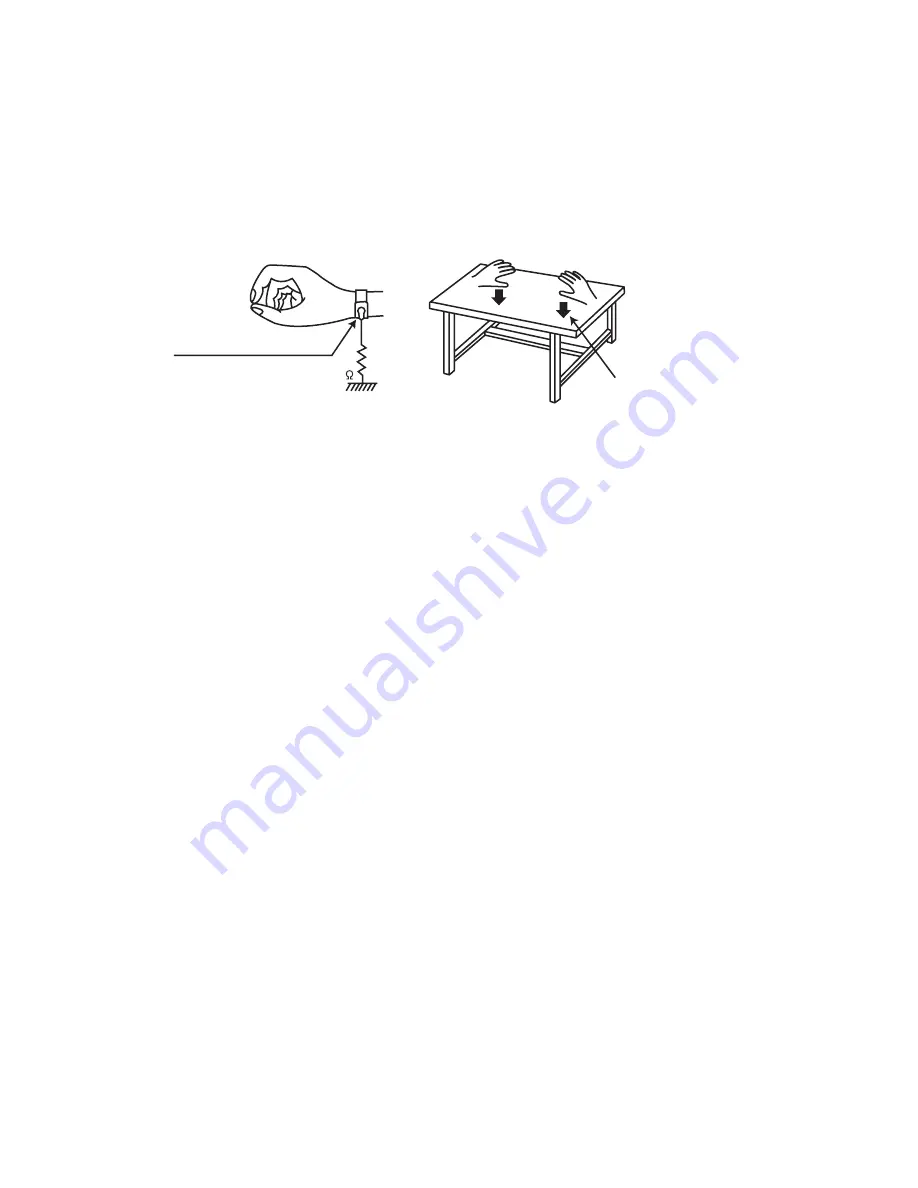
(No.PA037<Rev.001>)1-5
1.5
Preventing static electricity
Electrostatic discharge (ESD), which occurs when static electricity stored in the body, fabric, etc. is discharged, can destroy the laser
diode in the traverse unit (optical pickup). Take care to prevent this when performing repairs.
1.5.1 Grounding to prevent damage by static electricity
Static electricity in the work area can destroy the optical pickup (laser diode) in devices such as laser products.
Be careful to use proper grounding in the area where repairs are being performed.
(1) Ground the workbench
Ground the workbench by laying conductive material (such as a conductive sheet) or an iron plate over it before placing the
traverse unit (optical pickup) on it.
(2) Ground yourself
Use an anti-static wrist strap to release any static electricity built up in your body.
1.6
INSTALLATIONS
1.6.1 Installation method
The D-ILA system (reflecting type active matrix liquid crystal system) does not require convergence adjustment. Note the following
when placed on a floor (refer to OPERATING INSTRUCTIONS for actual operating method).
(1) Place the projector at the position needed for the required image size observe the projector is not tilted horizontally.
[The image size is 60 to 200(wide side) inches diagonal (16:9), requiring a projection distance of 1.78m to 6.06m]
(2) Adjust the placement site and screen tilt so that the projection angle is perpendicular to the screen.
(3) Adjust the placement site and screen position (height) so that the projection lens center is at the lower edge of the screen.
(4) Project an image on the screen. (Connect video equipment and power source, switch power on and select the input.)
(5) Fine adjust the projected image position and angle. If adjusting the placement site and screen cannot correct the projected po-
sition (too low) or angle (lower part of image widened), adjust the front foot.
(6) Turn the lens ZOOM ring by hand and adjust for suitable image size.
(7) Turn the lens FOCUS ring by hand and adjust to correct image blur.
1.6.2 Installation site and status
• The projector contains a fan for cooling. Obstruction of the ventilation openings can lead to internal overheating, abnormal operation
and failure. Also observe there is plenty of free space between the projector and adjacent walls, ceiling and other equipment.
Note that excess heat can cause failure and damage to both the projector and nearby equipment.
Required spacing :
Front = 15cm / left and right sides = 30cm / rear = 20cm (When the unit is enclosed with block according to the required spacing
on the left side, provide the unit with adequate ventilation so that the temperature inside of the enclosed area is kept at the same
temperature in the open space in the room.)
• Avoid locations that are wobbly or inclined. If the setting site floor has protrusions or horizontal cannot be maintained, there is risk
the projector may drop, fall over, etc. If located in a site where left to right tilt is greater than ±5
°
and front to rear tilt greater than
±10
°
, particularly the optical system components can be severely affected and there is risk basic performance and quality of the
projector cannot be maintained.
• Observe the site can stably bear the weight (approx. 11.0kg) of the projector over a long period of time.
• If mounted on a stand with casters, observe the casters are securely braked to prevent movement.
• Avoid suspending in a location subject to vibration. Both the projector and mounting fixture can be damaged.
• Do not place in the following types of locations.
Especially, Avoid locations subject to dust, grit, smoke or other airborne contaminants. Use adequate caution when providing exter-
nal ventilation, filters and dust protection.
1M
Conductive material
(conductive sheet) or iron palate
(caption)
Anti-static wrist strap
Near water or in humid sites
Near heaters or heat generating equipment
Dust or grit
Direct sunlight
Oily or tobacco smokes
Very high or very low temperature
Summary of Contents for DLA-HD550-BC
Page 27: ... No PA037 Rev 001 1 27 ...






































